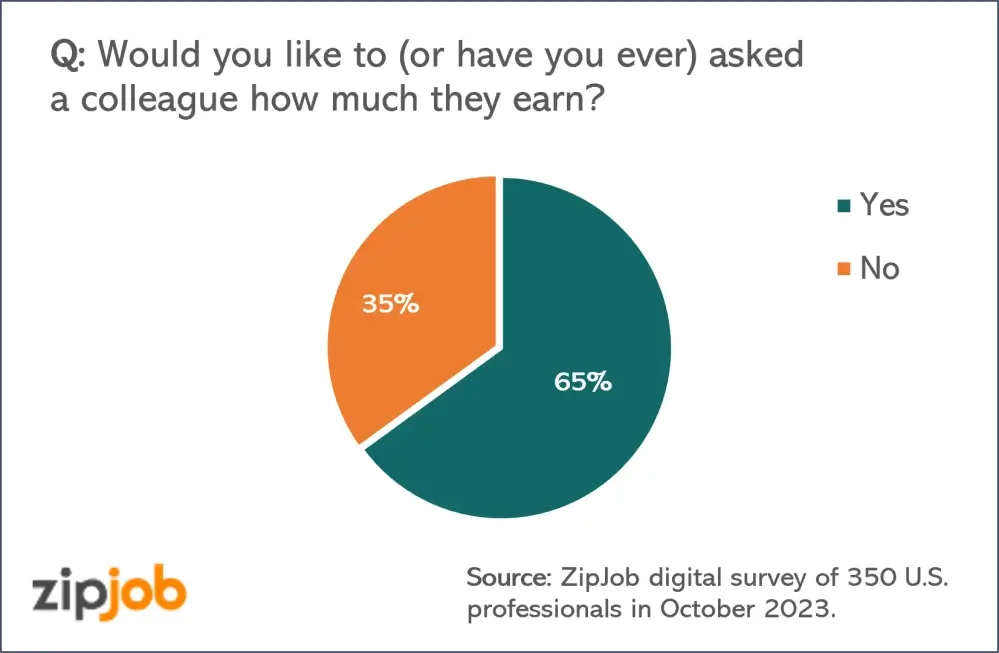Pay transparency: the pros, the cons, and best practices
Pay transparency enhances fairness, boosts employee satisfaction, and improves recruitment. Learn about the types, benefits, challenges, and best practices of open salary policies.

Pay transparency – or salary transparency – is a setup in a company (or industry) where companies provide information on pay and compensation to employees.
There are three different types of salary transparency according to Harvard Business Review:
Process transparency refers to openly communicating the methodology and criteria used by an organization to determine salaries, including how compensation levels are set, how raises and bonuses are awarded, and how performance is evaluated in relation to pay adjustments.
Outcome transparency involves disclosing the actual compensation figures, such as specific salary ranges or benchmarks for different roles and levels within the organization, allowing employees and candidates to see where their pay stands relative to those benchmarks.
Communications transparency refers to the openness and ease with which employees can discuss and share information about their own salaries with each other, without fear of retribution or policy violations, fostering an environment of open dialogue about compensation. It is illegal to prohibit conversations about salary in the workplace (in the US, especially) – here, it’s the explicit openness that’s emphasized in communications transparency.
Contents
The pros and cons of salary transparency
What are the pros and cons of pay transparency? There are many – while holistically it makes sense to be transparent about the compensation that one may receive if they were to get a specific job, or the pay that your colleague receives for the same job that you do, it does get more complicated than that.
In other words – it makes perfect sense in theory; in practice, it’s more nuanced.
Let’s first have a look at the main reasons why salary transparency is a good thing.
Arguments for pay transparency
1. Fairness and equity
This is probably one of the most resounding arguments in support of pay transparency – the assurance of equal pay across gender, race, and other demographics.
As ZipJob career consultant Amanda Augustine told us:
“We know that salary transparency […] shines a spotlight on any major wage gaps that may occur across various sectors of your population, of your workforce, whether that’s ethnicity or race, whether that’s gender,” she says.
“Those things tend to be more apparent and there’s a greater need to then address them.”
Related: Can’t afford to pay more? Be radically transparent with candidates
Economist AnnElizabeth McMahon of Indeed Hiring Lab also highlighted this benefit of pay transparency in an interview with Bankrate:
“Salary transparency does help eliminate those asymmetric information problems that can contribute to the gender wage gap, racial wage issues and the labor market,” says AnnElizabeth.
Linkage’s Chief Product Officer Kristen Howe agrees.
“Women can leverage this pay transparency to negotiate better salaries and start to level the playing field toward pay parity,” she told SHRM.
“Women can leverage this pay transparency to negotiate better salaries and start to level the playing field toward pay parity.”
2. Employee satisfaction
Employees will appreciate knowing exactly how much their peers are making – and being allowed and even encouraged to talk openly about it at work.
According to Bankrate, more than two out of five Gen Z workers (42%) and two out of five millennials (40%) have shared their salary with a colleague or another person in their network. According to ZipJob, 65% are all for salary transparency.
Employers would do well to support that openness.
Also, when salaries are demystified, this not only helps in setting realistic expectations but also empowers employees to navigate their career progression within the organization more effectively.
It’s not just about the pay itself. Workers feel respected when employers are transparent about salary strategy.
A PayScale study finds workers are five times as likely to be satisfied with their employer when they understand the reasoning behind their salary versus getting the compensation they want and need from a job. That speaks loudly to the value of openness and communication about pay structures in your company.
Moreover, the knowledge that their compensation is in line with market rates and organizational standards can motivate employees to enhance their performance, knowing that their efforts and contributions are recognized and rewarded appropriately.
This trend towards openness not only boosts individual morale but also cultivates a culture of accountability and fairness within organizations. Everyone wins.
3. Candidate motivation
There’s a huge benefit at the entry point into a company as well. SHRM finds that 70% of organizations saw more applicants as a result of listing pay ranges in their job descriptions.
“These results highlight that many organizations who provide salary ranges in job postings find doing so helpful to applicant quality and quantity,” says Derrick Scheetz, a senior researcher with SHRM.
“These results highlight that many organizations who provide salary ranges in job postings find doing so helpful to applicant quality and quantity.”
Interestingly, it’s not just about pay. Transparency in compensation can even lead to a richer applicant pool; SHRM’s research also highlights that 66% of employers found the inclusion of pay ranges in job postings increased the quality of applicants.
A broader pool of applicants, and higher quality at that. Employers get more of what they’re looking for when hiring for an open role – that’s a huge benefit.
4. Improved business outcomes
It’s not just a good thing in the eyes of employees and candidates. There are positive business outcomes for businesses as well.
For instance, a NBER study authored by Harvard Business School assistant professor Zoë Cullen finds a link between clear and understandable compensation structures and improved hiring processes and employee retention. Hiring can be an expensive business, so any way you can improve that process – and couple it with decreased need for backfill – it will reflect on the bottom line.
Also, openness about the salary range for a job ensures that those applying are better aligned with the role’s compensation expectations. Your candidates know right away what they stand to make if they get the job – and less time is wasted on evaluating job applicants only to find out later in the recruitment process that you’re not aligned at all on compensation expectations.
Salary transparency can also significantly impact employee retention rates at the onset – organizations who are transparent about pay can mitigate common causes of employee turnover related to pay dissatisfaction or perceived inequities.
Arguments against pay transparency
OK, it’s not all roses and cream. There are some drawbacks to pay transparency to consider.
1. Increased competition and envy
One undesirable consequence of opening up about salary across a company is increased turnover as a result of angst and disillusion when employees realize they should be making more for what they do.
Envy and competition can also be stirred up – not always a healthy thing for company culture, especially when others are making more than you do for the same job in the same company.
The good news is that this is only when you manage it poorly. It can be preempted if you go about it the right way.
Zoë in her NBER paper discusses how transparency can lead comparisons with peers in a counterproductive way – if Jer learns that he’s making $10K less per year for the exact same role as Maria, he’s naturally not going to be happy.
Transparency can have that complex impact on overall workplace dynamics.
2. Demotivation and turnover
Just as full transparency of salaries give employees a boost knowing their real worth and what they can do to move up the next salary band, it also can have a negative impact on engagement and motivation. Following on the point above, your employees can become more disengaged and turnover will spike as they hit the bricks looking for new, better-paying roles.
The aforementioned ZipJob survey found that 34% of professionals left their jobs in 2023 for better pay – and Workable’s Great Discontent 2023 survey found that 68.9% of workers say they’ll move jobs for a higher salary, up from 62.2% in 2021.
And 58.5% of those currently open to new work say money is a huge driver of that.
So be careful when you open things up like that. If you haven’t established fair and equitable pay in your organization, you might want to do that before opening up the coffers.
3. Challenges with implementation
Introducing pay transparency into your company isn’t a cut-and-dried process. There are numerous standards, variables, and even intangibles that go into the determination of one’s salary (or the salary band of an open position) – that reality is more so for companies with a complex range of roles and responsibilities.
Also what we discussed at the top about the different kinds of transparency – process, outcome, and communications. Which one do you establish (first)?
You can avoid these challenges by first sitting down and looking at the structure as it is, and ensuring that there’s a full structure, plan, playbook, set of rules, career pathing strategy, and so on before you open the information vault.
Skillsoft Chief People Officer Ciara Harrington discussed this with SHRM.
“The challenge this presents for companies is that many are simply not ready for this level of transparency.”
“The challenge this presents for companies is that many are simply not ready for this level of transparency.”
4. Loss of employer bargaining power
Pay transparency will bring a more standardized structure – ultimately eliminating a crucial negotiation point in the job offer and acceptance dance. And leverage usually rests with the employer since they’re the ones with the money – if you don’t accept their offer, they can bring in the next candidate who will agree to that arrangement.
Then again, there’s leverage on the side of employees as well. They can point to the market’s standards for similar roles to their own – and employers will have to adapt accordingly.
Another nuanced drawback is pointed out by Harvard Business Review: pay compression.
In other words, when performance-laden incentives (and base pay, in general) are made public, a common denominator is determined. That often leads to lower compensation across the board.
This isn’t theory. HBR described a study where when the government of California made city managers’ pay transparent in 2010, average compensation actually dropped by about 7% in 2012.
Pay transparency best practices
So, do you want to implement pay transparency in your business? If yes, then there are clear best practices. Here are a few to get you started:
1. Define your goals
Start with clear objectives. Do you want to address pay gaps? Improve employee confidence in compensation? Attract and retain top talent? Defining your goals helps tailor your approach.
2. Consider the scope
Will you disclose individual salaries, ranges for specific roles, or a combination? Align this with your goals and organizational culture.
3. Establish clear guidelines and policies
Be clear about what information will be disclosed, how, and to whom. Ensure it complies with relevant laws and regulations.
4. Define fair comparisons
Outline factors used to determine pay, such as experience, qualifications, and performance, to avoid confusion and potential inequities.
5. Communicate the policy effectively
Explain the rationale, goals, and expectations to employees clearly and transparently through multiple channels.
6. Address employee concerns proactively
Anticipate questions and concerns. Prepare for how you’ll address worries about unfairness, competition, or potential discrimination.
7. Offer training and support
Equip managers and employees with resources to understand the policy, answer questions, and navigate discussions constructively.
8. Establish open communication channels
Create safe spaces for employees to voice concerns and seek clarification without fear of retaliation.
9. Implement gradually
Start with a pilot program. Implement transparency in a smaller department or group first to test its effectiveness and address any initial challenges that come up.
10. Gather feedback and iterate
Conduct surveys, focus groups, and discussions to gauge employee sentiment and refine your approach based on their feedback.
11. Monitor and evaluate
Track key metrics like employee satisfaction, turnover, and recruitment success to assess the impact of transparency and make adjustments as needed.
Pay transparency: decide what’s right for you
The debate on pay transparency remains nuanced, with potential benefits and drawbacks to consider. While the ZipJob study highlights employee openness to discussing salaries and the desire for higher pay as a motivator for job changes, concerns about competition, demotivation, and implementation challenges persist.
Careful implementation, addressing employee concerns, and clear communication are crucial for success in pay transparency in your organization.
Frequently asked questions
- How does pay transparency promote fairness and equity in the workplace?
- Pay transparency shines a light on wage gaps, ensuring equal pay across gender, race, and other demographics by making compensation disparities more apparent and prompting necessary adjustments.
- What are the types of pay transparency?
- There are three types: process transparency, focusing on how salaries are determined; outcome transparency, revealing actual compensation figures; and communications transparency, facilitating open salary discussions among employees.
- Can pay transparency improve employee satisfaction?
- Yes, it demystifies salaries, sets realistic expectations, and shows respect for employees by being transparent about salary strategies, leading to a fivefold increase in satisfaction when the reasoning behind salaries is understood.
- What challenges might organizations face when implementing pay transparency?
- Challenges include managing increased competition and envy among employees, addressing demotivation and turnover, navigating the complexities of salary determination, and losing bargaining power in salary negotiations.
- What are some best practices for implementing pay transparency?
- Start with clear goals, consider the scope of disclosure, establish guidelines, communicate effectively, address concerns proactively, offer training, ensure open communication, implement gradually, gather feedback, and monitor outcomes to refine the approach.





